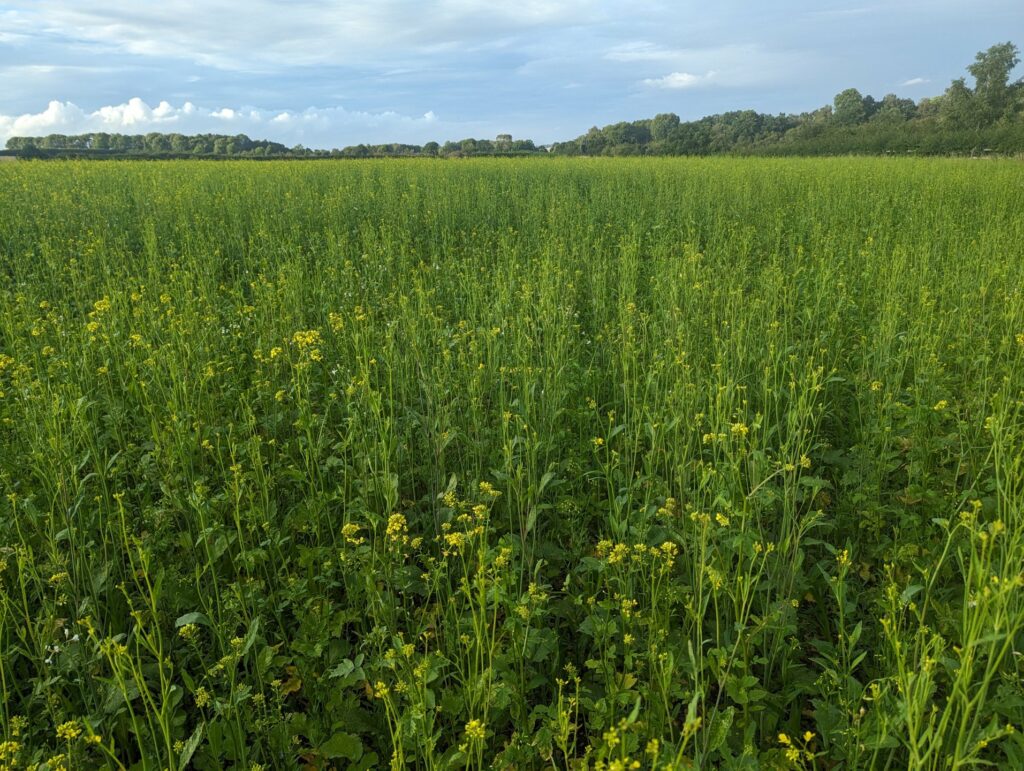Written by Angus Chalmers, Managing Director of RDP Comms
The World Economic Forum defines regenerative agriculture as ‘a way of farming that focuses on soil health.’ This is its key premise, using nature’s recipe, soil, to achieve productivity goals rather than relying on ever more complex manmade interventions. The last agricultural revolution was transformational for the wellbeing of the world’s population, but now we understand more about the impact of conventional farming, there is a growing realisation that we need to work more closely with mother nature’s natural processes.
Regenerative agriculture allows us to do this. As a more holistic approach to farming, it encompasses the whole eco system, enables us to work with and enhance what nature can deliver, and has the potential to provide a balanced and more efficient way of producing food. However, let us not forget that data, knowledge, and precision agriculture will be just as important in a regen world as it has always been. We will just be doing it as part of a more sustainable food system.
Industry events we have attended so far this year have demonstrated just how much momentum there is behind the regenerative movement. At Groundswell, Cereals, and a visit to an AHDB monitor farm, there has been a focus on different regenerative techniques and approaches. This illustrated just how broad a church regenerative agriculture is and therein lies its beauty. The reason it’s become such a strong movement is that it does not try to force farmers to follow a blueprint. It is inclusive, farmers can enter at multiple levels, starting simply by making a few minor changes or adopting wholescale system change. Ironically many farmers already practice some form of regenerative agriculture, but just do not recognise it as such.

The strong message of the regenerative ‘brand’
If we consider the regenerative ‘brand’ as a representation of UK agriculture, we need to be careful about how it is developed. How can we nurture the brand to cut through misinformation, particularly given that it is not perfect science and consumer understanding is lacking?
Recent research from EIT Food (European Institute for Innovation and Technology) looked at consumer perceptions of regenerative agriculture. It found that consumers do not think much about the different agricultural methods used to produce their food, but they are concerned about chemical use and food quality. They also perceive that food grown in a regenerative system is healthier, nutritious, and tastes better mainly because fewer chemicals and pesticides are used in production. There is also a wider recognition that regenerative agriculture is aligned to a sustainable food future in a greater way than conventional farming.
For both consumers and farmers, the regenerative agriculture brand has a strong message. It delivers nutritious food, and whether tastier or not is subjective, but it enhances soil health. Ultimately this delivers healthier crops requiring less intervention to help them grow and ward off pests and disease as they are extracting much of what they need from the soil. Mother nature’s recipe, when healthy and in good heart is more effective and has the potential to deliver greater returns to farmers.
A wider opportunity for society
The time is right for us as agriculturalists to back the regenerative movement, but in my mind the far bigger prize is the opportunity this represents for UK agriculture to engage with the rest of society and rally behind a brand which is already seen as positive. Rather than occupying different camps, demonising conventional farming for being too industrial, or organic farming for being expensive and low output, we need to embrace the regenerative movement, in all its guises. Encourage its uptake and development and invest in its future.
We need to recognise that this brand has the opportunity to penetrate right through to the consumer. Let us ask ourselves the question; how do we grow this positive position? What we must not do is confuse and divide, ‘my regenerative method is better than yours.’ Our great industry tends to shoot itself in the foot when our eyes are too firmly faced inwards, let us look outwards at our industry’s reputation in the eyes of the end consumer, we have a remarkable story to tell. By all means, if a certain approach provides a unique selling point, then make the most of it, enhance your brand and marketing approach but let us not damage the industry’s wider reputation.
In this age of instant communication and social media, it does not take long to spread messaging that is wildly incorrect, and that people take as gospel. There is no right way to adopt regenerative agriculture, we still have so much to learn, so we must not be too possessive, but be embracing for the good of UK agriculture.
I am under no illusion, however that there is a challenge in developing the regenerative brand, as it currently possesses so many definitions. A tighter definition would reduce the chances of damaging misinterpretation and enable faster growth and wider acceptance. However, the existence of this wide definition is exactly the reason regenerative agriculture has demonstrated such dramatic momentum. Is there is a place for an umbrella brand that remains a broad church, with more nuanced and focussed approaches developing their unique positions in support of the wider movement?
The regenerative movement is gaining momentum, in all its many guises, and combined with innovative technology and precision agriculture will increase the chance we have of delivering the food we need whilst enhancing soil health, biodiversity and nature reconstruction. Regenerative agriculture might not be perfect, but it speaks to many of the challenges we are facing and above all provides cut through to our most important judge, the consumer, so let us build on this opportunity.


